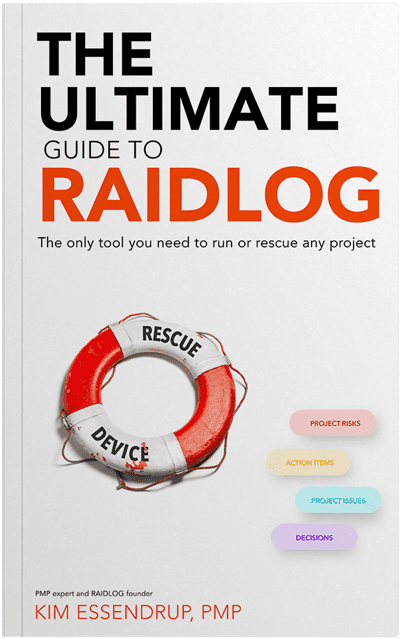If you have to get group consensus for a decision, a good strategy is to engage individually with each decision maker first, before presenting to the group as a whole for the decision. Start with the most opinionated or influential stakeholders first, then gradually work your way out to other stakeholders, building consensus individually, then in pairs or smaller groups behind the scenes. With this strategy, you will go into the final decision making meeting with the support and buy-in of the individuals involved, making for a more efficient and predictable group decision. If you can at all avoid it, never walk into a group decision making meeting ‘cold’ and try to get a decision made.
Document the decision in front of decision making groups
Whatever the process you use and however many decision makers are involved, when the decision is made you should document the decision in front of them in your Decision log. This is a great way to codify decisions. One of my colleagues used this to great effect; as she worked with her executive stakeholders to get a decision made, she would share her Decision log via Zoom or overhead projector, typing the exact decision and listing the names of everyone in the room as decision makers. You can bet that when the executives saw their name going down next to a decision, they paid quite a lot more attention to the decision being made!
What if I can’t get a critical decision made? Or I’m forced to revisit a past decision?
For decisions that you are having trouble getting made, you may need to escalate to your sponsor for support and direction. Hopefully with their help, you can get the decision made.
If a decision doesn’t get made by the required date or if you are forced to revisit and remake a past decision, these become issues so should go into your Issue log and get handled as such. For decisions that are being revisited and changed, be sure to let the decision makers know what the impacts are of re-making the decision. If they insist on proceeding, track this as another decision (rather than changing the previous decision entry in your log). If this impacts your project, track it also as a related Issue. And if the decision results in a need for additional funds, resources, time or a change in scope, it may also make sense to include a project change request as part of remaking the decision.
Case Study Conclusion: Decision of the Workers
Back in my Change Board meeting, I was still standing there, wondering what a Workers Council was. Fortunately I had my project sponsor sitting-in with me for support. He fully understood what was at stake when I was asked about Workers Council approval, and immediately jumped in.
“We shouldn’t need Workers Council approval on this, but I will socialize it with them to be sure. Can we get your conditional approval on this project change, assuming we can get confirmation from the Workers Council that they are OK with it?”
The Change Board agreed, giving us the OK to proceed with the change on the condition that we received approval from the Workers Council – or confirmation that they didn’t care. Immediately after the meeting, my sponsor went to work, reaching out to key members of the Workers Council to socialize our project and get their support. He must have done a great job, because he managed to get the Workers Council to hold an emergency meeting specifically to approve our project. Several days later, we went live as scheduled, and I had a whole new level of appreciation for people who can get decisions made in large European enterprises.
